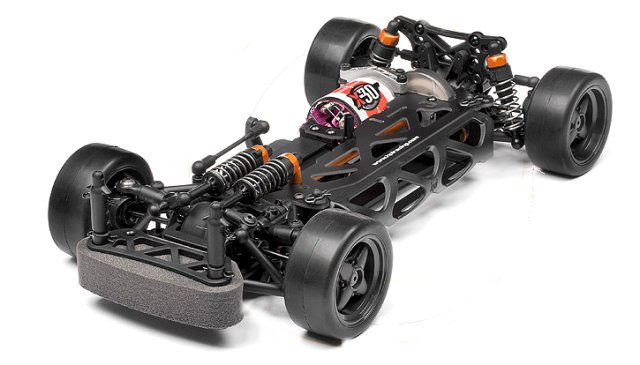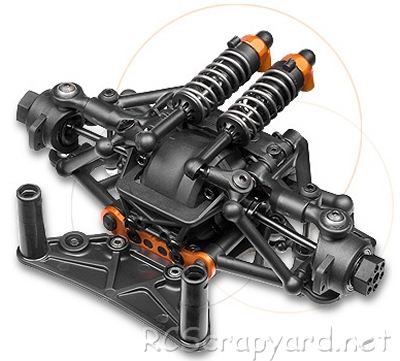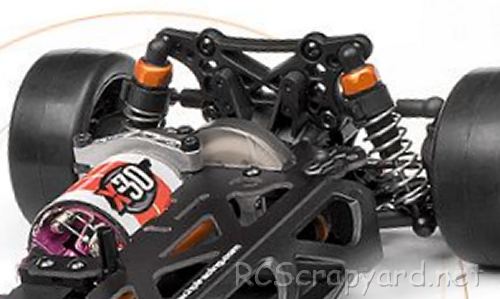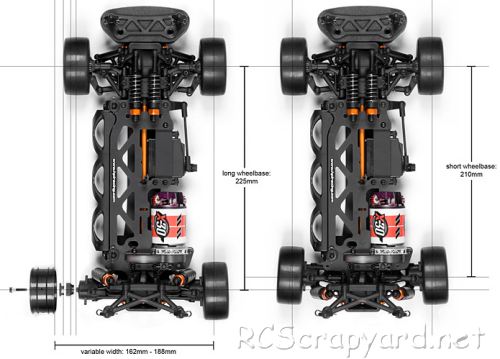

|
|
|


|
|
1/10 Scale Electric Rally/Touring Car:
HPI Cup Racer - Porsche 911 Carrera RSR 2.8 - # 102074 - Radio Controlled ModelHistory and Info for the HPI Cup Racer:
Introduced by HPI (Hobby Products International) in 2010, the Porsche 911 Carrera RSR 2.8 - # 102074 - based on the Cup Racer - True Ten Scale Touring Car chassis (This model is not quite a 1/10 Scale, and not a 1/12 Scale either, but for simplicity I have listed it as a 1/10), came as an unassembled kit, with a clear lexan bodyshell but no electrics or radio system. A number of other bodyshell options were available (Check out our HPI Archive).
▼ Scroll Down for More Images ▼
|








|
|
|

★ HPI Racing Cup Racer Chassis ★

★ HPI Racing Cup Racer Chassis ★

★ HPI Racing Cup Racer Chassis ★

★ HPI Racing Cup Racer Chassis ★

★ HPI Racing Cup Racer Chassis ★

★ HPI Racing Cup Racer Bodyshells ★

|
Buying a Used HPI Cup Racer
|
|
Manufacturers and Brands Catalogued, Listed and Reviewed by RC-Scrapyard.
At present, the RC Model Manufacturers, Brands and Distributors covered by us are: ABC Hobby, Academy, Acme Racing, Agama Racing, Amewi, Ansmann Racing, ARRMA, Team Associated, Atomic RC, Axial, AYK, Bolink, BSD Racing, Capricorn, Carisma, Carson, Caster Racing, Cen, Corally, Custom Works, Durango, Duratrax, ECX - Electrix, Exceed RC, FG Modellsport, FS-Racing, FTX, Fujimi, Gmade, GS-Racing, Harm, HBX, Helion, Heng Long, Himoto Racing, Hirobo, Hitari, Hobao, Hong-Nor, Hot Bodies, HPI, HSP, Intech, Integy, Jamara, JQ Products, Kawada, Kyosho, Losi, LRP, Maisto, Mardave, Marui, Maverick, MCD Racing, Megatech, Mugen, New Bright, Nichimo, Nikko, Nkok, Ofna, Pro-Pulse, Protech, PTI, RC4WD, Redcat Racing, RJ-Speed, Robitronic, Schumacher, Seben, Serpent, Smartech, Sportwerks, Step-Up, Tamiya, Team-C Racing, Team Magic, Thunder Tiger, Tomy, Top Racing, Traxxas, Trinity, Tyco, Vaterra RC, Venom, VRX Racing, WLToys, X-Factory, Xmods, Xpress, Xray, XTM, Yankee RC, Yokomo, ZD Racing and Zipzaps. |
|
Hints, Tips and Information
Servos for RC Models
Servos are found on all kinds of Radio Controlled Models. RC Touring Cars, Buggys, Trucks, Truggys, Monster Trucks, Rock Crawlers, Airplanes, Helicopters, Boats and Ships for Steering, Throttle Control, Rudder Operation and Wing Flaps. |
|
Hints, Tips and Information
Ride Height
To allow the suspension on any RC model to do its work properly, it needs to ride in a position where it is able to react to any bumps and holes it may encounter on the track. Therefore, it needs to be adjusted to somewhere in-between those limits. That position is commonly termed "ground clearance" or "ride height" and is generally measured as the distance between the underside of the chassis and the ground, with the motor and battery etc installed. |
|
RC Models:
|
Radio & Motors: |
Other
Accessories: |